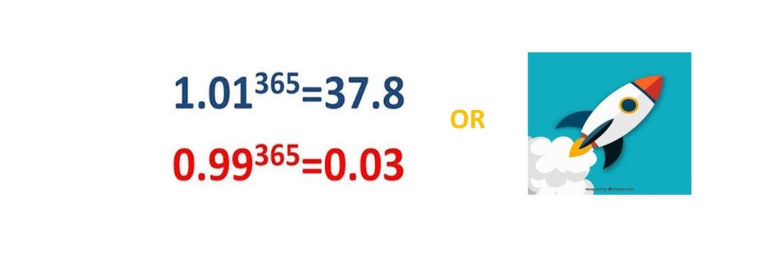Kristallnacht, or simply Pogromnacht, occurred 80 years ago on November 9-10, 1938. The Pogrom was…
Is Your HR Dashboard Telling the Whole Story? The Hidden Pitfalls of Engagement Measures
Employees who believe that management is concerned about them as a whole person – not just an employee – are more productive, more satisfied, and more fulfilled. Satisfied employees mean satisfied customers, which leads to profitability.” – Anne M. Mulcahy.
In the ever-evolving landscape of corporate management, understanding and nurturing employee engagement has emerged as a pivotal aspect of organizational success.
Engaged employees are not just more productive; they are the bedrock of innovation and customer satisfaction and are vital in creating a sustainable competitive advantage.
The Importance of Measurement
Why measure employee engagement? It’s simple: what gets measured gets managed.
Employee engagement has become a top priority for organizations looking to retain top talent, boost productivity, and improve the bottom line. Measuring engagement levels is crucial to understanding employees’ attitudes, fostering an engaging culture, and aligning business objectives across the organization.
Engaged employees are more passionate about their work, invested in the company’s success, and motivated to go above and beyond. Organizations with high engagement enjoy higher productivity, innovation, and discretionary effort from team members. Gallup estimates that highly engaged business units result in 21% greater profitability.
In contrast, disengaged employees cost organizations billions in lost productivity each year. Workers who are mentally checked out may foster negativity, feel no connection to company goals, and simply show up just to collect a paycheck. Studies found that actively disengaged employees cost the U.S. $483 billion to $605 billion annually.
Another recent research by McKinsey, employee disengagement and attrition can have a significant impact on the productivity of a median-sized S&P 500 company. This can lead to an estimated loss of between $228 million and $355 million per year. Over the course of five years, this translates to a minimum loss of $1.1 billion in value per company.
Measuring engagement allows companies to benchmark levels, uncover priorities for improvement, and track progress over time. Analytics empower leaders to make data-driven decisions that enhance culture, engagement initiatives, management practices, and more. Ongoing measurement also enables real-time pulse checks to monitor organizational health.
Key Performance Indicators (KPIs) for Employee Engagement
Identifying the right Key Performance Indicators (KPIs) is vital for accurately gauging employee engagement. These metrics provide tangible evidence of how engagement strategies are performing and where they might need adjustment.
- Employee Turnover Rate: A high turnover rate often signals poor engagement. Employees who are engaged are more likely to stay. Monitoring turnover rates, especially voluntary departures, can provide early warning signs of engagement issues.
High turnover has significant cost implications as well. According to one calculation, the expense incurred in replacing an employee can be as high as three to four times the remuneration of the position.
- Absenteeism: Engagement and attendance are intrinsically linked. Higher absenteeism can indicate lower engagement levels, as disengaged employees might need more motivation to show up consistently. The costs associated with absenteeism go beyond direct wage costs. By one estimate, the total cost of absenteeism for US employers is $225.8 billion annually.
- Productivity Metrics: These can include quality of work, efficiency, and the achievement of individual or team goals. Engaged employees typically show higher productivity, as their investment in their roles drives them to perform better.
- Employee Net Promoter Score (eNPS): This measures how likely employees are to recommend their workplace to others. A high eNPS is often a strong indicator of a positive, engaging work environment.
Google has long been recognized for its innovative approach to employee engagement. One of their essential practices is the use of “Googlegeist,” a comprehensive annual survey that assesses various engagement KPIs.
The survey covers areas like work satisfaction, culture, and management effectiveness. Google’s use of this data to make informed decisions has been integral in maintaining its reputation as one of the best places to work.
Using Surveys and Feedback Mechanisms
Surveys and feedback mechanisms are indispensable tools in the quest to measure and understand employee engagement. They provide a direct line to employee perceptions, experiences, and suggestions.
- Annual Surveys: These comprehensive surveys provide a snapshot of engagement levels across the organization. They are helpful for tracking long-term trends and identifying broad areas that require attention.
- Pulse Surveys: Short, frequent surveys, known as pulse surveys, offer real-time insights into employee sentiment. They are particularly effective in gauging the immediate impact of new initiatives or changes within the organization.
- 360-Degree Feedback: This feedback mechanism involves collecting insights from an employee’s subordinates, colleagues, and supervisors, offering a well-rounded view of individual engagement and performance.
- Exit Interviews: While often overlooked, exit interviews can yield valuable information about engagement and organizational culture from departing employees.
IBM harnesses the power of AI in its employee feedback systems. Using their AI-powered platform, they analyze open-ended employee feedback to identify sentiment trends and engagement drivers.
This approach enables IBM to gain nuanced insights into employee engagement far beyond what traditional surveys could reveal.
Using Focus Groups and Interviews
Focus groups and interviews can provide qualitative insights into employee engagement that surveys cannot. These techniques allow employers to have in-depth conversations with employees to better understand their attitudes, feelings, and experiences.
The benefits of gathering qualitative data are substantial. It provides context to survey results and quantitative data, captures detailed narratives and verbatim feedback, and facilitates follow-up questions and discussions.
This approach is crucial for uncovering root causes and “pain points” while directly gathering ideas and suggestions from employees.
When to Use Focus Groups vs. Interviews
The choice between focus groups and interviews depends on the specific needs and context. Focus groups are particularly effective for brainstorming solutions, gathering feedback from multiple people at once, and fostering dynamic discussions among employees.
On the other hand, interviews are more suitable for discussing sensitive topics that employees might be reluctant to share in a group setting, obtaining individual perspectives and experiences, and following up with employees after significant events.
Focus groups and interviews, when done correctly, can uncover deep insights into how employees think and feel. The qualitative data gathered from these efforts allows employers to understand engagement challenges and opportunities better.
Critical Factors in Employee Engagement
A multitude of factors influence employee engagement, each playing a pivotal role in shaping the overall workplace experience.
- Work Environment: A positive and supportive work environment fosters engagement. This includes physical aspects like ergonomic workspaces, as well as intangibles like a culture of respect, inclusivity, and open communication.
- Leadership: The role of leadership in driving engagement cannot be overstated. Leaders who inspire, recognize, and connect with their teams on a personal level create an atmosphere where employees feel valued and motivated.
- Recognition and Rewards: Regular recognition of achievements and contributions significantly boosts employee morale and engagement. This recognition can take many forms, from verbal praise to formal reward systems.
- Growth Opportunities: Employees are more engaged when they see a clear path for professional development and career progression. Opportunities for learning, upskilling, and advancement are crucial in retaining top talent and fostering a culture of continuous improvement.
Trends in Employee Engagement Measurement
The landscape of employee engagement measurement is continually evolving, with recent trends focusing on more dynamic and technologically driven approaches.
- Real-Time Feedback Tools: Organizations are increasingly adopting tools that allow for continuous, real-time feedback. These platforms enable employees to express their thoughts and feelings spontaneously, providing immediate insights into engagement levels.
- AI-Driven Analytics: Artificial Intelligence (AI) is playing a significant role in analyzing employee engagement data. AI can uncover patterns and insights from large data sets, identifying engagement drivers and predicting potential issues before they escalate. AT&T championing continuous learning and development, offering employees various learning tools and career advancement opportunities. They utilize pulse surveys and focus groups to assess employee sentiment and implement tailored engagement initiatives.
- Employee Wellness Programs: There’s a growing recognition of the link between wellness and engagement. Companies are integrating wellness metrics into their engagement assessments, acknowledging that physical and mental health are crucial for sustained engagement. Abbott invests heavily in employee health and wellness programs, promoting a positive work-life balance. They regularly conduct employee surveys and implement feedback based on the results.
- Personalization of Engagement Strategies: With the help of advanced analytics, organizations are moving towards more personalized engagement strategies tailored to meet the unique needs and preferences of individual employees.
These trends indicate a shift towards a more holistic, immediate, and personalized approach to measuring and enhancing employee engagement.
Post-Measurement Actions
After measuring employee engagement, the crucial next step is to act on the findings. This phase is where the real work of elevating engagement begins.
- Develop Actionable Plans: Based on the measurement outcomes, develop specific, actionable plans to address areas of concern. Utilize the SMART strategy to enhance planning effectiveness. Develop specific, realistic, and measurable action plans in response to measurement outcomes. Ensure these plans are time-bound for efficient implementation and effective resolution of identified concerns
- Engage in Open Communication: Share the results of the engagement surveys with employees and openly discuss the planned actions. This transparency fosters trust and demonstrates a genuine commitment to improving the workplace.
- Implement Targeted Initiatives: Based on feedback, implement initiatives that directly address the identified issues. These include leadership training, improvement in work-life balance policies, or new recognition programs.
- Monitor Progress and Iterate: Continuously monitor the impact of these initiatives on engagement levels. Be prepared to iterate and make changes as needed, demonstrating adaptability and a commitment to continuous improvement.
Acting on the insights gained from engagement measurement is imperative for any organization looking to build a more engaged, productive, and satisfied workforce.
Conclusion
Measuring and elevating employee engagement is not a one-time effort but an ongoing process that requires commitment, adaptability, and a deep understanding of the workforce.
By focusing on key performance indicators, leveraging surveys and feedback mechanisms, understanding the critical factors of engagement, and keeping abreast of the latest trends, organizations can foster an environment where employees feel valued, connected, and motivated.
Remember, an engaged workforce is the cornerstone of a thriving organization. And what better way to elevate your employee engagement than with a cup of Mutombo Coffee?
Fuel meaningful discussions on employment engagement with Mutombo coffee. Elevate your pulse checks, sensitive conversations, and exit interviews by sharing a cup of Mutombo. Strengthen connections, foster collaboration, and make each engagement moment unforgettable.
Founded by NBA Hall of Famer and global humanitarian Dikembe Mutombo and social investor Bob Bush, Mutombo Coffee was created to amplify the mission and values of our corporate partners while supporting African and Latin American farmers.
References



